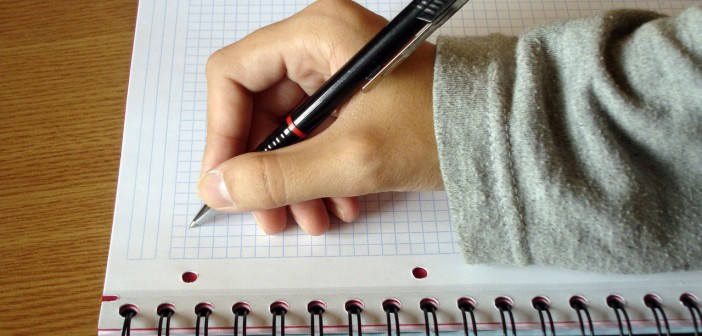I have seen some “interesting” pencil grips in my time as a teacher.
The best had to be the pencil between the ring and the middle finger (rude finger, or tall man depending on your kids favourite term for it) as demonstrated below.

Not sure how the student acquired this particular technique suffice to say that it didn’t affect their academic outcomes as they were up at the top of the class.
Even in the age of technology where as adults we tend to use keyboards rather than handwrite our messages, handwriting is still an important part of a child’s academic and cognitive development. From what I have researched on the topic of handwriting here are a few things that may be helpful for you to think about with regard to your own children.
- Fluency not neatness is the most important thing. Being able to write quickly is more important than being super neat. Students that struggle with fluency will not be able to translate their thoughts onto the page quickly enough and they will spend their energy trying to form letters and words rather than transcribe their ideas. Conversely, students who can write fluently are free to concentrate on their thoughts and ideas and process content if they are taking notes.
- Correct pencil grip matters somewhat but is not critical: The correct pencil grip gives the greatest amount of dexterity when it comes to writing while requiring the least amount of effort. As mentioned in the introduction, pencil grip is not critical to academic outcomes, but can help make the task easier and less tiring for little hands and limbs. For more on correct pencil grip there is a great little tutorial on the following link: https://www.wikihow.com/Hold-a-Pencil(p.s. I help my kids about their pencil grip at home because I know that often the teachers at school are stretched for time may not be able to invest in this too much. I take it on as my responsibility, because I have the time at home. Mind you my 8 year old is much more receptive than my 5 yr old 🙂
- Improved Handwriting can help Cognitive Development. Research has shown that improved handwriting skills has benefits for cognitive development and motor skills and can lead to improved writing skills and reading comprehension. Printing, cursive writing, and typing on a keyboard are associated with separate brain patterns and lead to different results. When children write text by hand, they produce more words faster than they do on a keyboard and express more ideas.
- Handwriting creates better readers. Writing and reading go hand-in-hand. Practising writing helps a child learn vocabulary words, sentence structure, spelling and patterns in words, and story structure, which all help in building a stronger reader.
- Builds Self-Confidence – A child who can write fluently will have self-confidence in the classroom. They can relax and achieve more in school and express themselves freely through writing. Help your kids build confidence in handwriting by giving them practise at home if need be. Like any sport or musical instrument practise is important to master basic skills.
- Modelling handwriting to children is important too. Sit down with your kids and show them how you write, how you grip the pencil, or even how you learnt to hold a pencil properly when you were at school (if you remember). If not remember there is a link above to a helpful tutorial.


1 Comment
What a joy to find such clear thgnkini. Thanks for posting!